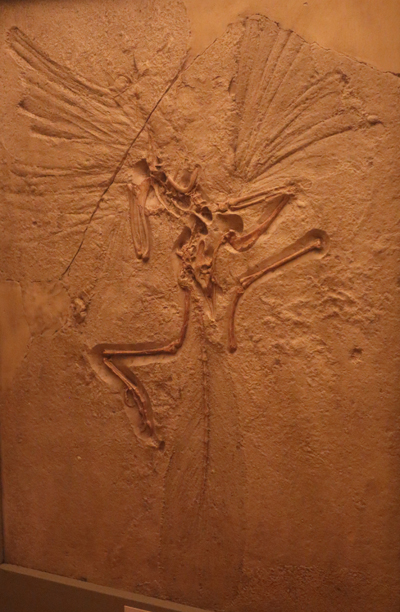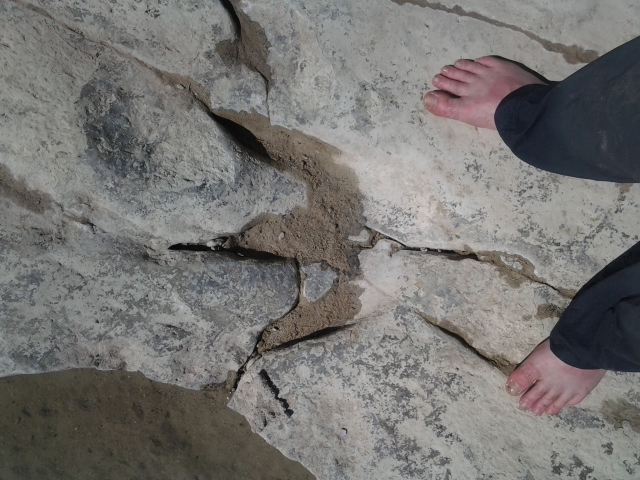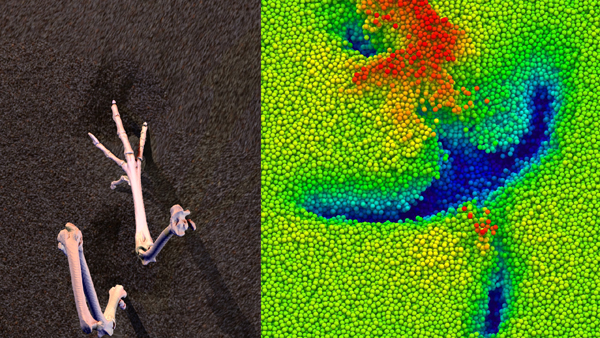It is widely accepted by palaeontologists that birds are descended from theropod dinosaurs. Their evolutionary lineage, the transition over time from the fast-running, agile, terrestrial Maniraptora to the birds we see today remains not fully understood. A new research project is being set up giving scientists the opportunity of tracing dinosaur footsteps to help them to better understand the evolutionary path of the avian dinosaurs.
A £2.2 million GBP ($2.65 million USD) Research Project
A £2.2 million GBP ($2.65 million USD) research project funded by the European Research Council is being set up to permit scientists to study the evolution of the Dinosauria through their fossil tracks. The research project is to be led by Dr Peter Falkingham, a reader in vertebrate biology in the School of Biological and Environmental Sciences at Liverpool John Moores University.
Fossils of feathered dinosaurs and Mesozoic birds are known and have been extensively studied. Perhaps, one of the most intensively studied species in the entire fossil record is Archaeopteryx lithographica, a feathered theropod from the Upper Jurassic of southern Germany.
This five-year research programme, with its focus on studying theropod trace fossils, will provide a fresh perspective on the locomotion of the theropod/avian lineage.

Commenting on the scope of the study, Dr Falkingham explained:
“Fossil footprints are a direct record of motion in a way that skeletons can never be. I will use fossil footprints to explore the locomotor changes that took place as theropod dinosaurs evolved into birds.”
Creating a New Team
The plan is to establish a new team of post-doctoral scientists and technicians that will undertake advanced 3-D imaging of fossilised tracks and fossil skeletons. By combining trace fossils and body fossils in this way, the team hope to utilise kinematic and kinetic analyses to build an unprecedented view of footprint formation.
Tracing Dinosaur Footsteps
Limb motions of dinosaurs will be reconstructed using fossil tracks. Supercomputer simulations modelling every grain of a sediment responding to the indenting foot will be used to evaluate the reconstructed motions.
Dr Falkingham commented:
“These simulations will compute the forces occurring between foot and ground. These forces and motions will drive musculoskeletal biomechanical simulations that will shed light, not only on what the feet of dinosaurs were doing, but on how the whole limbs and even bodies of these enigmatic animals once moved. By sampling fossil tracks from around the world, spanning the 230 million years since theropods first appeared, this project will recover fossilised motions along the dinosaur-bird lineage.”
Extending our Knowledge About the Dinosaurs
Dr Falkingham added:
“The results should give us a unique view of locomotor evolution that cannot be recovered from bones alone.”
Everything Dinosaur acknowledges the assistance of a media release from Liverpool John Moores University in the compilation of this article.
For further information and to follow the progress of this research project, visit the website of Dr Peter Falkingham: Dr Peter Falkingham.









Leave A Comment